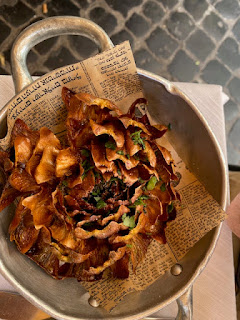After a decadent lunch we hopped on the airport shuttle to Stavanger's closest beach which took us back past the airport and not too far from the city itself. The weather played nice and we were greeted with sunshine and the occasional bracing sea breeze. Hearty Scandinavian families walked, rode bikes and built sand castles on the shore making the most of the increasing daylight hours.
Fjord Tour
On Sunday morning, we made for the port to hop on a 3hr cruise of Lysefjorden and Preikestolen (also known as Pulpit Rock), Stavanger's most stunning natural beauty. Most people come to the city to hike the famous rock but Dawn made it clear there would be 'no mad walks up big hills. I know you, Jen.' And so we queued to buy tickets for Stavanger's number one attraction, by boat. Fate almost intervened when the cruise ships docked and the ship was nearly sold out. My advice: book tickets online in advance and avoid the drama.
We opted for the outdoor top deck views and although temperatures weren't arctic, we were grateful for our hats, scarves and layers.
The scenery was incredible. Every which way we turned, it was impossible to be disappointed. The water danced, reflected, shone in ways I did not know was possible. The air tasted just like you image oxygenated, pollution-free fresh air would--it made a stark contrast to any day in even blue-sky London. The entire journey was absolute magic.
Debarking and making for the airport after a weekend of fresh air and blue skies felt like a bit of a let down. And clearly a weekend is not enough to really dive into Norway's beauty. So I'll keep it on my list of places to return to--next time I'll take that hike up the big hill.














































